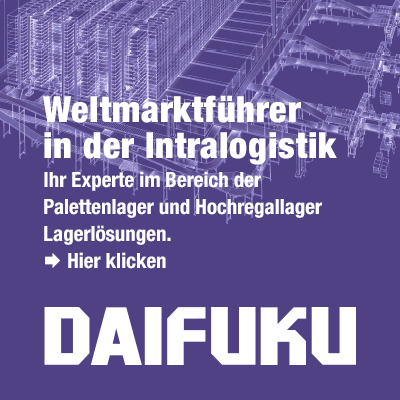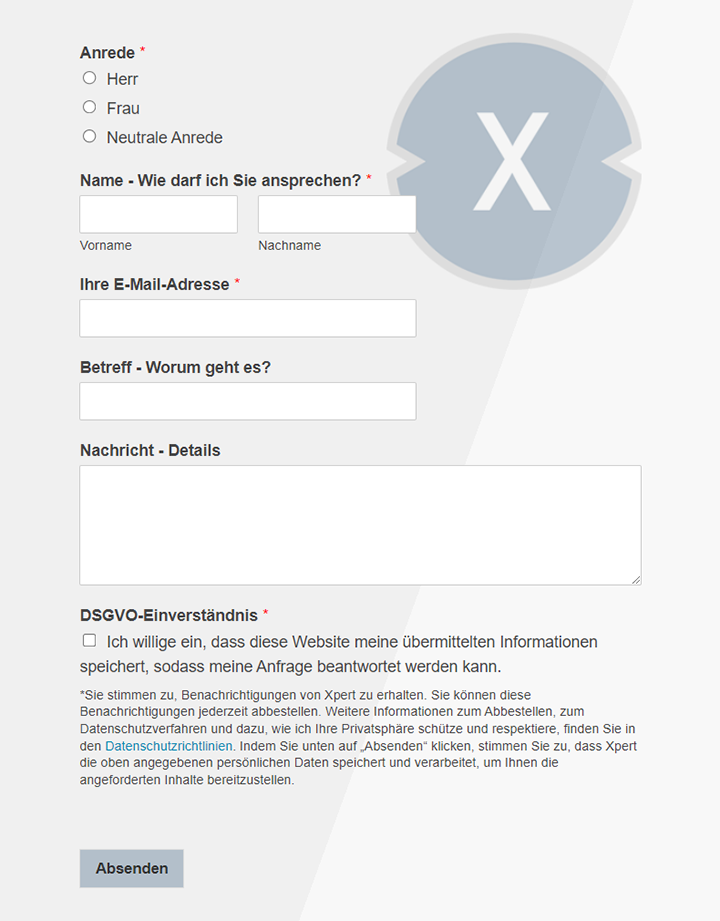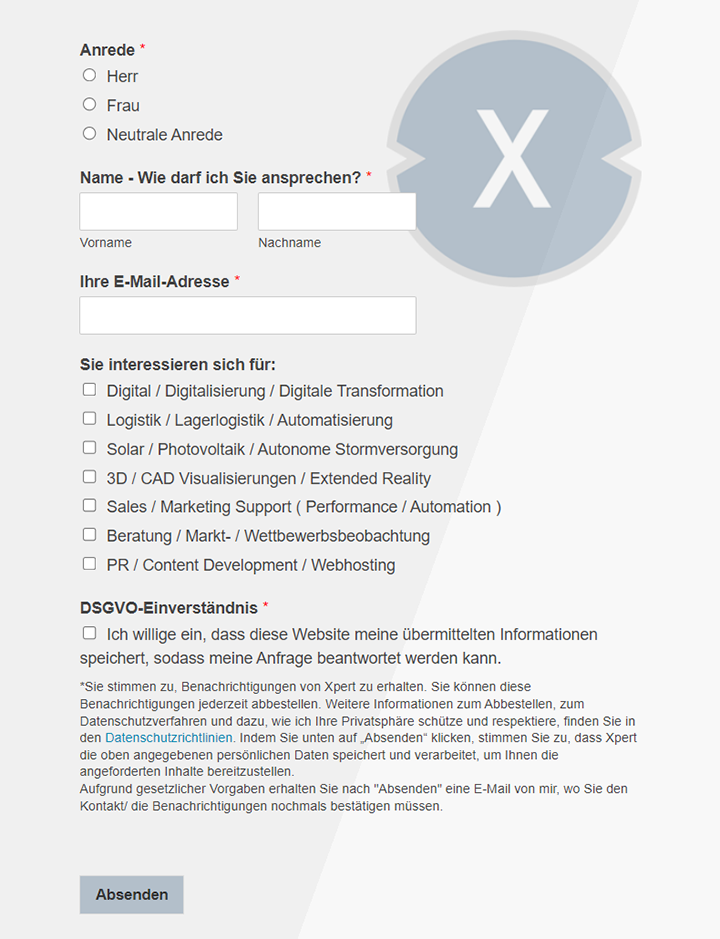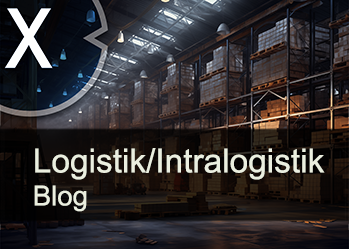Automation for SMEs: too expensive? Too complicated? Robots in craft and logistics? Wrongly thought!
Xpert pre-release
Language selection 📢
Published on: February 16, 2025 / update from: 16. February 2025 - Author: Konrad Wolfenstein

Automation for SMEs: too expensive? Too complicated? Robots in craft and logistics? Wrongly thought! - Image: Xpert.digital
Automation for SMEs: The greatest myths exposed
Stay innovative: automation as the key to competitiveness
The automation of business processes and production processes is increasingly regarded as the key to increasing efficiency and securing competitiveness in modern economy. Despite the growing availability of innovative technologies, many small and medium -sized enterprises (SMEs) shy away from implementing. Often it is deeply rooted myths and misunderstandings that prevent companies from integrating automation solutions into their processes. However, these assumptions are often based on outdated ideas or misinformation. This report refutes common myths, shows concrete advantages and offers practical recommendations for SMEs that want to invest in automation.
Suitable for:
Myth 1: Automation is only profitable for large companies
Scalable and flexible solutions for SMEs
Many entrepreneurs believe that automation is only profitable for large industrial companies with massive production lines. However, this assumption is based on outdated models. Today's technology is modular and offers small companies the opportunity to gradually invest in automation. For example, companies can start with individual, collaborative robots (cobots) that can be flexibly integrated into existing production processes. Later, other components can be added to gradually expand automation.
Economy through new financing models
Another argument against automation is the supposedly high initial investment. But thanks to innovative financing models such as leasing, pay-per-use or “Robotics as a Service” (RAAS), SME can use automation-oriented SMEs without major capital bonds. Many technologies amortize within two to three years through increased efficiency and lower operating costs.
Myth 2: Automation leads to job losses
Automation creates new opportunities
The fear of loss of job due to automation is deeply rooted. But instead of destroying jobs, automation transforms work processes. Repetitive and physically stressful activities such as material transport or simple quality controls can be automated so that employees can devote themselves more value -added and more creative tasks.
Further training and qualification
Automation increases the need for specialists who can deal with the new technologies. This opens up new development opportunities. Many companies are already investing in training programs to train their workforce in areas such as robotics control, data analysis and process optimization. This not only increases employee satisfaction, but also the company's innovative strength.
Suitable for:
Myth 3: Implementation is too complex and expensive
Simplified integration through modern software solutions
In the past, the implementation of automation required extensive IT resources and highly specialized staff. Today there are intuitive low code and no-code platforms that enable SME to use automation even without extensive IT knowledge. Cloud -based systems also offer easy scalability and minimize maintenance costs.
Faster amortization through increased efficiency
Many companies fear high costs if they integrate automation solutions. Practical examples show that the investments often pay for themselves within one to two years. Automated accounting systems reduce error ratings by up to 90 %, which saves companies significant costs for post -processing. In production, cobots can optimize material consumption and thus reduce production costs.
Use state funding programs
Many governments now offer funding programs for SMEs that want to introduce automation. In Germany, for example, the “Digital now” program enables financial support of up to 50 % of the implementation costs.
Myth 4: Automation affects product quality
Precision and consistency as a competitive advantage
Automated systems work with high precision and constant quality. Machines can recognize the finest deviations and make corrections in real time, while human errors often lead to product defects. Companies from the food or pharmaceutical industry benefit particularly from automated test systems because they can guarantee the highest quality standards.
Flexibility and individualization
Another argument against automation is supposed inflexibility. However, modern cobots and AI-controlled production systems are able to quickly adapt to new requirements. This enables SMEs to produce small batches or customer -specific products efficiently.
Myth 5: Automation suffocates creativity and innovation
More freedom for innovative processes
Automation not only makes it easier to increase efficiency, but also creates space for creative processes. Employees have to deal with monotonous tasks less and can concentrate on strategic or creative work. In product development, automated simulation programs can help to optimize prototypes faster and to bring innovative ideas to the market faster.
AI as an innovation engine
Artificial intelligence can help companies predict trends and develop new products in a targeted manner. Startups and SMEs are increasingly relying on AI-based market analyzes to make their strategy more agile and innovative.
Automation as an opportunity for SMEs
The myths mentioned are often based on outdated assumptions and prevent SME from exhausting the full potential of modern automation. Today's technology is more flexible, cost -efficient and more user -friendly than ever. Companies that open up to automation benefit from higher competitiveness, better quality and new growth opportunities.
Suitable for:
Recommendations for action for SMEs
- Start small: Take the first steps with modular and scalable solutions.
- Include employees: offer training courses and further training at an early stage.
- Consider automation as an investment: take long -term efficiency gains into account.
- Use funding: obtain state support for implementation and development.
- Preserve flexibility: choose technologies that can be easily adapted to changed conditions.
- Companies that now invest in automation secure long -term competitive advantages in an increasingly digitized market.
Xpert partner in warehouse planning and construction
Our recommendation: 🌍 Limitless reach 🔗 Networked 🌐 Multilingual 💪 Strong sales: 💡 Authentic with strategy 🚀 Innovation meets 🧠 Intuition
At a time when a company's digital presence determines its success, the challenge is how to make this presence authentic, individual and far-reaching. Xpert.Digital offers an innovative solution that positions itself as an intersection between an industry hub, a blog and a brand ambassador. It combines the advantages of communication and sales channels in a single platform and enables publication in 18 different languages. The cooperation with partner portals and the possibility of publishing articles on Google News and a press distribution list with around 8,000 journalists and readers maximize the reach and visibility of the content. This represents an essential factor in external sales & marketing (SMarketing).
More about it here:
Automation in small and medium -sized companies: a comprehensive analysis of the economic and operational advantages
Why automation is easier for small companies than you think
In today's, rapidly changing economic world, small and medium -sized companies (SMEs) are facing the constant challenge of securing and expanding their competitiveness. A decisive factor that has emerged as a strategic advantage for SMEs is the integration of automation technologies. Automation is no longer just a topic for large corporations; It has become an essential tool for SMEs to optimize operational processes, increase economic efficiency and to assert itself in the market in the long term.
This report illuminates the diverse advantages that SME can implement by automating your business and production processes. We will examine how automation promotes operational excellence, enables economic savings, creates strategic competitive advantages, improves quality assurance, supports employee development and strengthens resilience compared to market risks. We will refute the widespread assumption that automation requires complex and unaffordable investments and show how SMEs can achieve significant improvements by using automation solutions.
Suitable for:
Increasing surgical efficiency through automation
Operative efficiency is the backbone of every successful company, and automation plays a key role in optimizing business processes. For SMEs that often operate with limited resources and personnel structures, the automation of routine tasks and complex processes can make a huge difference.
Reduction of manual routine tasks: release time and resources
A significant part of the working time in SMEs is still spent on repetitive, manual tasks. This includes, for example, data entry, the creation of invoices, the management of stocks, the processing of customer inquiries or the implementation of routine tests. Studies have shown that up to 30 percent of working hours flow into such activities in some SMEs. These tasks are not only time -consuming and susceptible to human errors, but also bind valuable employee resources that could be used for more strategic and more value -added activities.
This is where automation comes in. By using technologies such as Robotic Process Automation (RPA), workflow automation systems or specialized software solutions, repetitive tasks can be automated. A practical example is accounting: Cloud -based bookkeeping systems are able to automatically generate payment reminders, to post incoming payment via interfaces and even carry out simple coordination. Processes that used to use hours or days a week can be reduced to a few minutes. In the area of production, collaborative robots, so -called cobots, can take on monotonous assembly work. By using cobots in production, a company like Weber was able to reduce throughput times by up to 40 percent. These examples illustrate how automation can eliminate routine tasks and release valuable working hours.
Optimized resource use through intelligent systems
In addition to the reduction of manual tasks, automation also contributes to optimized resource use. Modern automation systems are often equipped with artificial intelligence (AI) and real-time data analysis functions. These technologies enable SMEs to gain deeper insights into their operational processes and use resources more efficiently.
For example, AI systems can identify bottlenecks in supply chains or in the machine utilization in real time. By analyzing sensor data from production systems, logistics processes or sales channels, companies can react early to problems and take preventive measures. The food company Cleca was able to increase its brewing production by 15 percent by analyzing sensor data from six production stations and synchronizing the process times. By optimizing the production processes based on real -time data, the company was able to maximize the utilization of its systems and minimize waste.
Automation also offers considerable potential for resource efficiency in warehouse management. Automated warehouse management systems (WMS) enable precise inventory tracking, optimize storage space usage and reduce search times through automatic inventory acquisition. A SME in the logistics industry was able to reduce its picking times from an average of 45 minutes to just 12 minutes per order by introducing a WMS. This time savings not only lead to faster order processing, but also to a reduction in the required workforce and an optimized use of the storage area.
Economic advantages and cost reduction through automation
The surgical increases in efficiency due to automation are directly reflected in economic advantages and cost cuts for SMEs. These advantages can be divided into direct and indirect economic effects.
Direct cost savings through automation
One of the most obvious economic advantages of automation is direct cost savings. By automating workflows, SMEs can significantly reduce personnel costs for routine tasks. Case studies in the sales area show that automated sales processes can reduce personnel costs for administrative activities by up to 35 percent. Fewer personnel for repetitive tasks not only mean lower wage costs, but also savings in social security contributions, non -wage costs and administrative costs.
Another area for direct cost savings is to reduce error costs. Manual processes are naturally more susceptible to human mistakes that can lead to costly reworking, waste of materials or even customer -free satisfaction. Automated systems, on the other hand, work more precisely and consistently. In accounting, for example, the introduction of automatic plausibility tests can drastically reduce the error rate for data acquisition and processing. Some companies were able to reduce the error rate in accounting from 8 percent to less than 0.5 percent.
Automation technologies such as cobots or precise manufacturing systems can also enable material savings in production. Due to the higher precision and repeat accuracy of automated processes, less material is wasted and the committee rate is reduced. The automotive supplier India Dreusicke was able to reduce its production costs by 22 percent by using cobot production, which was largely due to material savings and a reduction in the production committee.
Indirect economic effects and faster ROI
In addition to direct cost savings, automation also generates indirect economic effects that have a positive effect on the profitability of SMEs. This includes, for example, higher productivity, faster market launch of new products and services, improved customer satisfaction and increased innovative strength.
Modern automation systems are often characterized by short amortization times. Many SMEs report that their investments in automation technologies will pay for themselves within 18 months or even faster. A medium-sized company from mechanical engineering was able to amortize its cobot use through reduced rework and a higher machine utilization after 11 months. This quick amortization makes automation attractive for SMEs with limited financial resources.
In addition to the direct and indirect economic advantages, there are also state funding programs that support SMEs financially in implementing automation technologies. Programs such as “Digital now” in Germany cover up to 50 percent of the implementation costs for digitization projects, including automation solutions. These funding minimize the liquidity pollution for SMEs and make it easier to start automation.
Strategic competitive advantages through automation
In addition to the operational and economic advantages, the automation of SME also opens up strategic competitive advantages, which are decisive in an increasingly dynamic and globalized market environment.
Agility and marketability through flexible systems
In today's fast -moving economy, agility and market adaptability is a crucial success factor. SMEs must be able to react quickly to changed customer needs, new market trends or unexpected events. Automation enables SME to make your processes more flexible and more adaptable.
Modular automation solutions based on open standards and flexible architectures enable SMEs, their production lines or business processes within hours or days. A textile operation in Baden-Württemberg can produce special designs at series costs through programmable nutrients. The flexibility of the robots enables the company to quickly respond to individual customer requests and to adapt its product range to demand. This agility has the company's flexibility in order.
Cloud-based CRM systems also contribute to the agility of SMEs. Thanks to the real-time analysis of customer data, sales teams can react faster to market trends, create personalized offers and dynamically adapt their sales strategies. Companies report that through the use of cloud-based CRM systems, they can react up to 30 percent faster to market trends.
Scalability without proportional cost increase
Another strategic advantage of automation is scalability. Automated systems can usually be easily adapted to rising order volumes or growing business requirements without the costs of growing with the proportion. This is particularly advantageous for SMEs, which have to quickly expand their capacities in growth phases without losing cost control.
Automated sales pipelines can, for example, process a tripling of the inquiries without having to hire additional staff. The Reeply company was able to scale its sales processes through automation in such a way that it could cope with a significant increase in the request for request without having to increase the personnel resources in the sales area.
In production, scalable robot cells or flexible manufacturing systems enable SME to increase their capacities with constant workforce. A metal processor was able to increase its production capacity by 170 percent by the use of scalable robotic cells. This scalability enables SME to benefit from size advantages and to remain competitive even when the business volume is growing.
Quality assurance and process optimization through automation
Quality is a crucial factor for the success of SMEs. Customers expect SME products and services of high quality and at competitive prices. Automation plays an important role in quality assurance and process optimization.
Precision increase in production and troubleshooting
Automated production systems and inspection systems enable a significant increase in precision in production and a reduction in errors. Vision-controlled inspection systems based on AI-based image labeling methods can recognize surface defects or production errors with an accuracy of up to 99.7 percent. In comparison, the accuracy of manual tests is often only around 92 percent. The higher precision of automated inspection systems leads to a significant reduction in poor productions and rework.
In the pharmaceutical delivery, where the highest quality standards apply, a AI-based packaging line has reduced the false charts from 1.2 percent to only 0.03 percent. The automation of the packaging processes and the integrated quality control through AI systems have led to a significant improvement in product quality and a reduction in production failures.
Consistent process implementation and compliance security
Automation also contributes to consistent process implementation and ensuring compliance. Workflow automation tools define and document process steps and ensure that these steps are always carried out in the same order and according to the same rules. This is particularly important in industries with high regulatory requirements, such as medical technology or the food industry.
A medical technology SME was able to reduce its certification audits from 120 to just 40 hours, since all quality assurance steps were logged without logs through workflow automation tools. The complete documentation of the processes and the detection of compliance with quality standards have significantly reduced the effort for audits and increased compliance security.
Employee development and job design in the context of automation
It is often feared that automation leads to job losses and a deterioration in working conditions. However, the reality shows that automation, correctly used, can have positive effects on employee development and workplace design in SMEs.
Higher job satisfaction through tasks transformation
Studies in automated companies show that employee satisfaction usually increases when repetitive and monotonous activities are eliminated by automation. The employees are freed from stressful routine tasks and can concentrate on more demanding and more varied activities. This leads to higher work motivation and increased identification with the company.
At Trelleborg Sealing Solutions, cobot use in production not only led to efficiency increases, but also to a release of employee capacities for innovation workshops. The employees who were previously employed with repetitive assembly work were now able to contribute their creativity and specialist knowledge into the development of new products and processes. This led to an increase in the company's innovative strength and higher employee satisfaction. Overall, studies in automated companies report to an increase in employee satisfaction by up to 28 percent.
Competence development through new requirements
The introduction of automation technologies also creates new requirements for employee skills. In the area of operation, maintenance and further development of automation systems, new jobs and qualification profiles are created. SMEs that invest in automation must also invest in the further training of your employees to ensure that they can effectively use and develop the new technologies.
The introduction of AI tools, for example, increases the demand for qualifications in the field of data literacy, i.e. the ability to understand, analyze and use data. The Fraunhofer IML has developed special training modules that prepare employees for automation tasks within six months. These training not only convey technical know-how, but also promote understanding of automated processes and the ability to work with automated systems. Successful training programs can prepare up to 78 percent of employees for new automation tasks within a short time.
Resilience against market risks through automation
In a world that is characterized by increasing uncertainties and market risks, automation can also contribute to strengthening the resilience of SMEs. Automated processes are less susceptible to external disorders and can help SMEs to deal with challenges such as shortage of skilled workers or crisis situations.
Coping with a shortage of skilled workers by using technology
The shortage of skilled workers is a growing problem for SMEs in many industries and regions. Automation can help to reduce the need for workers in certain areas and to make SMEs more independent from the labor market. Automated warehouse management systems can, for example, reduce the need for physical pickers by up to 60 percent. Chatbots in customer service can automatically answer standard inquiries and relieve service staff of up to 70 percent of routine inquiries, as studies in retail. By using automation technologies, SMEs can alleviate the shortage of skilled workers and maintain their business processes with fewer staff.
Resistance to crisis through process stability and remote ability
Covid-19 pandemic has made the importance of crisis resistance and process stability for companies clear. Automated SMEs were better able in pandemic to maintain their business than companies with strong manual processes. For example, automated production systems can continue to work without restrictions in shift operation, even if employees fail due to illness or quarantine. During the Covid 19 pandemic, automated SMEs recorded an average of 23 percent fewer production failures than non-automated competitors.
Cloud-based systems that make up a large part of the automation solutions also enable a seamless transition to the home office and remote work. Employees can access data, applications and processes from anywhere in the world and take care of their work routing. Studies show that in SMEs with cloud systems, up to 89 percent of office employees were able to do a seamless transition to the home office. This remote ability increases the flexibility and resilience of SMEs in crisis situations and enables you to maintain your business even under difficult conditions.
Conclusions and strategic implications for SMEs
The comprehensive analysis of the advantages of automation for SMEs clearly shows that automation is not a luxury project or an option for the future, but a strategic must for SMEs that want to remain competitive in the long term. Automation is a decisive factor for operational excellence, economic efficiency, strategic agility, quality assurance, employee development and resistance to crisis.
For SME decision-makers, the following strategic implications result from these findings:
Prioritized implementation in areas with high ROI potential
SMEs should begin with automation in the areas that offer the greatest potential for quick amortization and a high return on investment (ROI). This often includes areas such as warehouse logistics, invoicing, customer service or repetitive production processes.
Choose modular system architectures
When choosing automation solutions, SMEs should pay attention to modular system architectures that are gradually expandable and customizable. This enables flexible introduction to automation and a successive expansion of the automation initiatives.
Employee participation and early training courses
The integration of employees into the automation process is crucial for success. SMEs should inform your employees at an early stage about the planned automation projects, include them in the selection and implementation of the systems and offer them comprehensive training. Prototype tests and pilot projects can help to create acceptance and prepare the employees for the new working methods.
Systematic use of funding programs
SMEs should systematically use the diverse funding programs of the federal and state governments to reduce the investment costs for automation projects. Early information about funding opportunities and professional application can significantly minimize the financial burden on SMEs.
Companies such as Ftapi demonstrate that investments from 15,000 euros can enable significant efficiency jumps. The combination of AI, robotics and process automation creates synergy effects that can lead to disproportionate improvements. A mechanical engineer achieved a productivity increase of 210 percent within two years through the parallel introduction of cobots and a modern ERP system. These examples show that automation is not a question of the size of the company, but a question of strategic orientation.
The digital transformation, in which automation plays a central role, becomes a critical success factor for SMEs. In 2024, companies with a clear automation strategy recorded an average of 14 percent higher sales returns than non -automated competitors. In view of the rapid technological progress and the availability of scalable and inexpensive automation solutions, there is no rational alternative for the quick implementation of automated systems. The future belongs to the agile, efficient and resilient SMEs who consistently use the opportunities of automation.
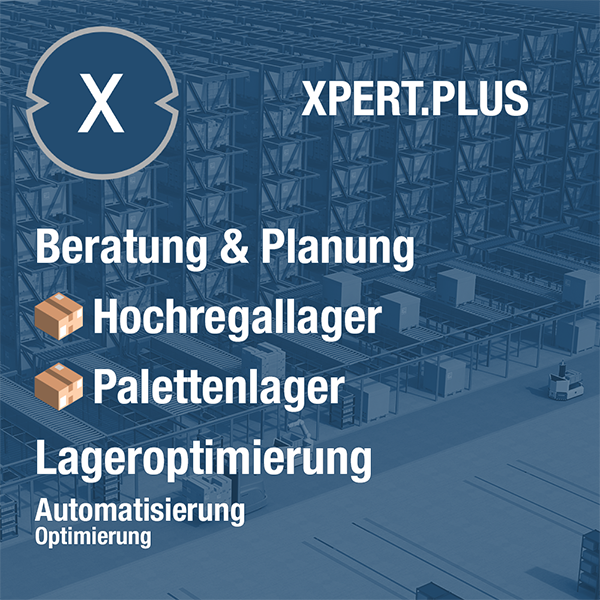
Xpert.Plus warehouse optimization - high-bay warehouses such as pallet warehouses consulting and planning
We are there for you - advice - planning - implementation - project management
☑️ SME support in strategy, consulting, planning and implementation
☑️ Creation or realignment of the digital strategy and digitalization
☑️ Expansion and optimization of international sales processes
☑️ Global & Digital B2B trading platforms
☑️ Pioneer Business Development
I would be happy to serve as your personal advisor.
You can contact me by filling out the contact form below or simply call me on +49 89 89 674 804 (Munich) .
I'm looking forward to our joint project.
Xpert.Digital - Konrad Wolfenstein
Xpert.Digital is a hub for industry with a focus on digitalization, mechanical engineering, logistics/intralogistics and photovoltaics.
With our 360° business development solution, we support well-known companies from new business to after sales.
Market intelligence, smarketing, marketing automation, content development, PR, mail campaigns, personalized social media and lead nurturing are part of our digital tools.
You can find out more at: www.xpert.digital - www.xpert.solar - www.xpert.plus



